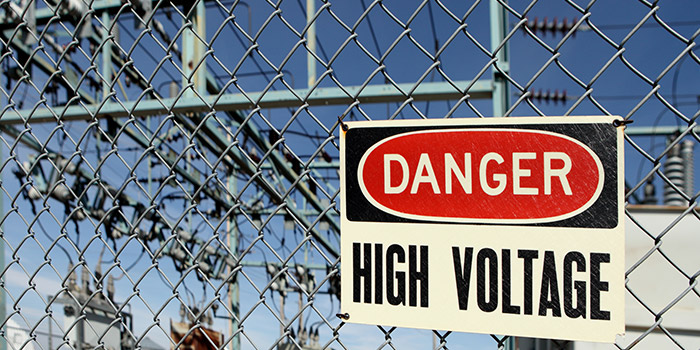Electrocution Attorney

The same power that makes your lifestyle possible can become deadly in an accident. Electricity is perfectly safe most of the time, but when something goes wrong, and an electric current enters your body, it can cause severe damage. On the job, electrocution is the third most frequent cause of workplace fatalities, accounting for 8.1 percent of all industrial deaths, according to OSHA. At home, you can get a shock when you touch a defective electric appliance, or you could be burned by faulty wiring. If you have been injured by unsafe electrical conditions, it is time to speak with an electrocution attorney.
Why Electric Current Is Damaging
Your body has its own proprietary electrical system, and interference from outside current can cause your system to go haywire. A jolt of electricity can result in irregular heartbeat, muscle contractions and brain seizures. It overheats your metabolism, burning and decimating your soft tissues. A high voltage injury can be fatal. Several factors determine the severity of an electrical injury:
- Current strength
- Current type
- Exposure time
- Current path through your body
The strength of the electrical charge corresponds to its voltage. Your household runs primarily on 110-volt power circuits, but some large appliances such as your refrigerator may require a 220-volt power source. Once a charge tops 500 volts, it qualifies as high voltage, which is far more dangerous to your health than household current, although either can cause injury. The longer the current flows through your body, the more severe the damage is likely to be.
Of the two basic types of current, direct and alternating, the latter is more dangerous. Direct current moves in a single direction, and often a single jolt forces you away from the power source. Alternating current, in contrast, changes direction up to 60 times every second, and when it enters your body, it grips onto your muscles, acting like a locking mechanism to prevent you from releasing the wire or other current source. The typical path of DC current is in through the point of contact, usually your hand, and out through your foot. AC electrical current may zigzag through your body, damaging your heart, brain or other critical areas.
Actionable Electrical Injuries
More than one-third of electrical injuries from 2003-2010 resulted from a person coming into contact with electric tools, lighting, appliances or industrial equipment, according to U.S. Department of Labor statistics. Another one-third occurred when an individual touched wiring, transformers or other components of electric systems. High voltage injuries from contact with power lines accounted for only two percent of electrical injuries but caused 40 percent of accidental electrocution deaths.
If a defective power saw shorted out while you were using it, for example, burning your hands and arms, the manufacturer may be liable for your injuries. If you are electrocuted on the job due to exposed wiring, your employer is likely responsible. When somebody’s negligence or intentional actions cause you injury, the law entitles you to financial compensation. An electrocution attorney has the experience you need to secure the full amount you are due.
Legal Advocates for California Communities
If you reside in California, get in touch with Rizio Lipinsky Heiting when you have an electrical injury. We will help you demystify the legal process and advocate for you in obtaining the full compensation you deserve. Get started now by submitting our online form, or call us today at 1-888-292-8888 to schedule a complimentary consultation.
- This article should only be used for informational purposes. It does not constitute legal advice, and it does not create an attorney-client relationship with anyone. If you need legal advice, please consult an attorney in your community.

